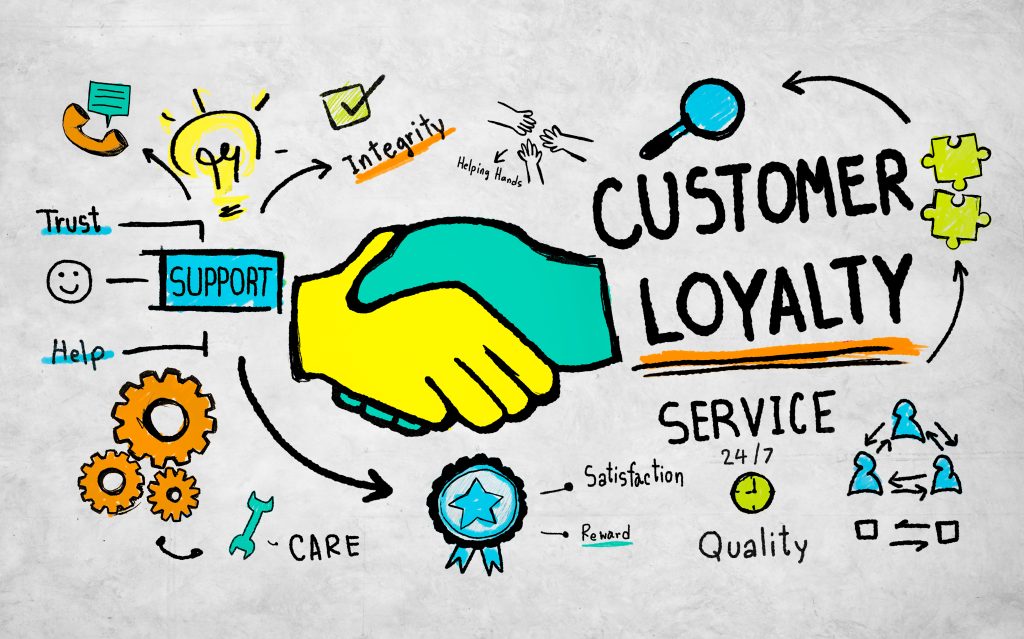In some cases, you can easily pinpoint the reason you lost a customer. But what about those losses you didn’t see coming? The customers who seem happy, or at the very least not unhappy, with your product or service and then suddenly call it quits or disappear. In these cases, it can be difficult to identify the reason for the turnover. However, there’s a strong consensus among industry experts that your overall customer experience strategy has a profound impact on your retention rate – more than you might realize.
Things like your onboarding process to your day-to-day customer service can make the difference in whether or not you keep a customer. Decreasing customer churn requires a customer-centric approach – one that is enhanced through personalization and a strong customer experience.
While customer churn is something that is often overlooked or downplayed – if you’re reading this, you know it’s a problem worth looking into. We’ll take a look at some of the causes and solutions related to customer turnover and discuss steps that can be taken to reduce churn, and better yet, strengthen customer loyalty in the long term.
This can look slightly different depending on your industry and customer base, but generally speaking, the following advice can be used by any business to boost customer retention.
First Things First, Find Out Why
Why are you losing customers?
In order to focus on a solution, you first need to identify the problem. Start by looking inward at your customer care and recognize where it’s falling short. More often than not, weak spots present themselves in poor customer service processes and impersonal messaging.
Customer service should be taken as seriously as advertising. So much energy and money are put into customer acquisition when existing customers are the ones supporting your bottom line.
As you start looking at your customer care processes, you might find that you’re losing people because they feel they aren’t getting value from what you’re offering or because of a poor onboarding experience. Once you start pinpointing your weaknesses, you can start looking at things more closely – like whether or not you’re doing a good job of communicating the value of your product or service or all the ways you can improve the onboarding experience.
To see the problems you have in your business, look at the data. This might include:
- NPS Scores (Net Promoter Scores)
- CSAT (Customer Satisfaction Scores)
- Customer Feedback
- Number of Support Tickets Over a Period of Time
- Retention Rate
- Social Media Image
Both qualitative and quantitative data need to be looked at for any comprehensive customer churn analysis. It’s also helpful to look more closely at any customer care inquiries that went unresolved or customer survey responses to better understand where customers have concerns.
One of the more important metrics listed above is retention rate. If you don’t have this number or aren’t sure how to get it, we can help you. Understanding your customer churn rate is crucial since it helps you benchmark where you’re currently at so you can see if new retention strategies actually work.
As you work to collect and organize data, you’ll start to find trends in your customer service and see where a poor customer experience led to churn. For example, higher support calls within a given time period might indicate a problem. This data can help you learn when customers are at risk of leaving so you can reach out before that happens.
Once you identify your primary causes of customer churn, you can start to address them.
Make Loyalty a Priority
An important takeaway from this section is that you can’t just expect customer loyalty, you have to earn it. The Harvard Business Review found that businesses consistently identified as “loyalty leaders” within their industry, in terms of customer satisfaction, grew revenues 2.5x faster than their competitors. By prioritizing customer lifetime value, they increased their ROI from current customers, which ultimately led to stronger growth.
Speaking of customer lifetime value – we have a whole blog post talking about 5 ways you can boost your CLV. Click here to check it out!
The opposite of churn isn’t necessarily retention – it’s loyalty. You want more than to just keep a customer for the next year, you want them to become a brand ambassador, an advocate for your business, someone who recommends you left and right. That should be the goal. So what can you do to get there?
Start focusing on retention strategies that prioritize loyalty. Taking a note from loyalty programs would be a good place to start, even if your industry doesn’t typically use these kinds of programs. Think about it – a loyalty program welcomes you with exclusive offers or access to content, it keeps you in the loop, and you get perks just for being a customer.
Depending on your business, you don’t need a punch card or newsletter to make your customers feel valued. Find what works for your business and your customers – in what ways can you celebrate them and their journey as your customer?
And when it comes to exclusive offers, as your relationship with your customers starts to develop and you learn more about them, you can leverage their information to create personalized offers that are both relevant and appealing. By curating your offers to their interests and buying behavior, you can increase the likelihood of further sales and build a deeper connection with your customers.
Introducing Personalization
Gartner Digital Markets shared their top 5 strategies to stop customers from leaving. The first thing mentioned on that list? Personalization.
This is what they had to say:
“Create a culture of personalization. Customers appreciate when companies go the extra mile to understand their needs and personalize their experiences. Segment customers according to their needs and preferences, and then provide personalized after-sale services, including customer support, tailored product recommendations, and timely follow-ups.”
True personalization is applied on a customer-by-customer basis. It’s not sending out a mass message to a large group of people – it’s sending a personalized message to a specific individual.
You might be surprised how small changes can make all the difference. For example, if all you changed was adding the customer’s name to a message, that lets the customer know the message was made just for them.
Another great opportunity to add personalization is when potential buyers reach out to your business for more information. At this point, customers are actively seeking help and evaluating their options, so providing personalized help and resources can go a long way.
For example, rather than sending a generic sales email to anyone requesting more information, ask for their name and why they’re interested. You can then send a personalized message highlighting anything relevant to that person. This ensures the information you’re sharing is helpful and that you understand their unique challenges and are willing to go the extra mile.
The second strategy Gartner lists as a way to avoid churn is through the onboarding experience.
“Onboarding is pivotal in reducing customer attrition, as it sets the tone for a new customer’s overall experience with your business. Ensure your customers have a smooth transition from their trial period through onboarding, with no bumps along the way.”
One way you can add personalization to your onboarding process is through a welcome video or email. This personalized message is a key moment in the onboarding process, as it sets the tone for what a customer can expect from you. And it’s also important to note here that personalization is not something that should only happen during the onboarding process – which might be the case for many businesses. You have to be consistent. Start thinking about what steps you’re taking to make sure every engagement with every customer is directly relevant to their experience with your business. Remember, if you don’t deliver relevancy and consistency, another brand will.
Personalizing Your Customer Experience
At this point, you might be wondering if adding personalization to your marketing strategy is complicated or expensive. Well, it doesn’t have to be.
For example, if you’ve been adding a recipient’s first name to an email message all this time, you’ve already been using personalization. And if you haven’t, start there! It’s a simple, inexpensive way to add personalization and help you stand out in a crowded inbox.
You can even add personalization to other media besides text – it’s just as effective in images, GIFs, and videos. Whether you’re looking at your email marketing strategy, social media, or customer service over the phone – adding personalization can go a long way.
Going back to customer service – a big part of good customer service comes down to anticipating questions and being ready with solutions. Adding small human touches, like greeting your customer by name, can make all the difference in the heat of the moment.
Long Term Customer Retention
Ready to improve your customer retention strategy? We’re here to help. We encourage you to read our post on 5 ways to boost your customer lifetime value customer lifetime value and reach out to learn more about adding the right personal touches to your current marketing strategy.

